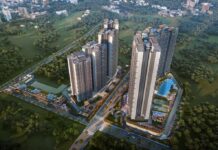In the fast-evolving Indian real estate market, few factors influence the value of commercial property as profoundly as location. While design, amenities, and pricing play their part, it is ultimately the geographical setting that determines a commercial asset’s long-term success. From visibility and workforce access to rental yields and capital appreciation, location shapes the performance and promise of real estate investments.
Why Location Still Rules?
Think about it, would you rather set up your office in a buzzing commercial hub with metro connectivity or a far-off suburb with no access roads?
That’s why transport infrastructure is one of the biggest drivers of commercial property value. A 2023 Knight Frank report found that offices within 500–800 meters of a metro station earn 10–20% higher rental yields.
India’s new-age commercial hubs aren’t just about steel and glass they’re about sustainability and smart planning. Cities like Gurugram (Millennium City), Bengaluru, and Pune are leading the charge. These cities are seeing a boom thanks to green infrastructure, tech parks, and sustainable urban policies. Wherever there’s eco-conscious development, commercial real estate demand follows fast.
How India’s Commercial Property Market is Being Redefined by Location
India’s commercial real estate landscape is undergoing a silent revolution one driven not just by big buildings and bigger brands, but by the power of location. In the past, success often hinged on being in a Central Business District (CBD). Today, however, cities like Gurugram, Mumbai, Bengaluru, and Hyderabad are embracing the rise of multiple commercial micro-marketsself-contained hubs that combine connectivity, modern infrastructure, and proximity to talent pools. These new-age markets are reshaping how and where businesses choose to operate.
Interestingly, the pace of commercial property launches is beginning to rival, and in some places even surpass, residential launches. This shift reflects a larger demand trend driven by expanding sectors like IT, co-working, logistics, and retail. Businesses now seek spaces that are not only functional but also strategically located close to transit hubs, urban housing, and consumption clusters.
While Grade-A offices and tech parks get much attention, India’s urban real estate needs more well-planned high-street markets, especially in densely populated areas. These are not just about shopping—they’re lifestyle ecosystems. In many residential-heavy zones, the absence of structured retail and service outlets creates a disconnect between where people live and where they shop, eat, or unwind. High-streets bring vibrancy and economic activity, offering a much-needed bridge between commercial intent and community need.
Gone are the days when commercial real estate was just about office floors. Today, spaces are increasingly leased to essential services—think diagnostic labs, healthcare centres, cloud kitchens, delivery hubs, fintech branches, and education startups. These businesses need proximity to the consumer, and they thrive in neighbourhood-centric markets. For landlords and developers, this trend ensures longer leasing cycles and stable rental income.
Neighbourhood Solutions: The Future of Mixed-Use Development
With India’s cities expanding vertically and horizontally, residential societies are growing in scale and density. Yet, they often lack neighbourhood-based commercial solutions that support daily life. Whether it’s a co-working café, pharmacy, bakery, or grooming salon—integrated commercial zones within or near housing clusters are becoming essential. These setups not only boost convenience for residents but also create micro-business opportunities, ensuring a more self-reliant community ecosystem.
Zooming Into Gurugram: SPR and Dwarka Expressway’s Rise
Gurugram’s commercial growth is being driven by two high-potential corridors—Dwarka Expressway and the Southern Peripheral Road (SPR). Both zones are rapidly emerging as prime commercial hubs due to strong connectivity, infrastructure upgrades, and proximity to Delhi and IGI Airport.
Dwarka Expressway has seen property prices jump from ₹9,434 per sq. ft. in 2020 to ₹18,668 in 2024–25—a massive 58% increase. Sectors like 113, 106, and 37D are now delivering rental yields between 8% and 12%, making them appealing to both investors and enterprises.
Meanwhile, SPR has become Gurugram’s most active commercial corridor. Prices have nearly doubled, and since 2022, over ₹50,000 crore worth of projects have been launched, with another ₹50,000 crore in the pipeline. With business parks, retail complexes, and mixed-use developments in full swing, SPR is fast establishing itself as a commercial powerhouse.
Together, these corridors highlight how strategic location, supported by infrastructure and demand, is redefining Gurugram’s real estate future.
Today, the definition of a “prime” location is more refined. It includes not only centrality but also future infrastructure, ease of access, digital readiness, and support from urban policy. Location has always been the cornerstone of real estate, but in India, it now embodies foresight and future-proofing.
For investors, developers, enterprises and buyers, choosing the right location isn’t just a smart move it’s a strategic imperative shaping growth, profitability, and legacy.





















